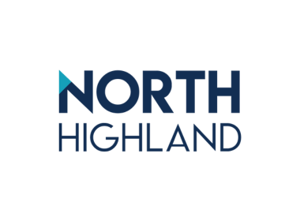Build Balanced Strategies for Your Business
Implementing a PPM solution effectively requires organizations to maintain the right balance between top-down portfolio management and bottom-up project execution. Learn how you can leverage this vital framework to build your business for success.What is PPM?
Project Portfolio Management or PPM was defined by Gartner in 2004 as an approach to integrating the various elements of project management (planning, scheduling, resourcing, etc.) with top-down portfolio management. The intent was to help organizations select the right investments – those that aligned with strategy, and then execute those investments in the right way. Implementing a PPM solution effectively requires organizations to maintain the right balance between top-down portfolio management and bottom-up project execution.
Why is it important?
PPM is essential, especially in today’s world that is evolving and changing so rapidly. Strategic Portfolio Management creates the framework for success for an organization – by identifying the investments that are needed to achieve the goals and objectives of the business. But those investments must then be broken out into work items and delivered as effectively and efficiently as possible – consistently, regardless of how much the environment is changing. That’s the function of PPM, and done right, it maintains alignment between the key strategies and the work being done to deliver those strategies.
14 Elements of PPM
There are several key elements to PPM, all of which have to be effective for PPM to succeed.
1. Portfolio governance:This is a lean approach that provides effective leadership control while allowing teams the flexibility to deliver in ways that work best for them.
2. Portfolio management:This is what organizations use to manage work from the top-down, focusing on ensuring that all work is aligned with organizational strategies.
3. Demand management:This is the ability to manage all demand in one location with standardized business casing that ensures the best initiatives are always being selected.
4. Resource management:This requires a detailed understanding of current and forecast resourcing needs, identification of gaps and established approaches to resolve while balancing skills and resources.
5. Cost management:This provides clear and complete visibility into planned, actual, and forecast costs combined with the ability to understand and manage variables across all initiatives.
6. Outcome/Benefits management:The ability to track objectives across the lifetime of all initiatives is critical, as is showing performance against targets and forecasting the likelihood of success at an individual investment and overall portfolio level.
7. Schedule management & roadmaps:This ensures all current and upcoming work is scheduled in alignment with organizational strategies, delivering the right work at the right time while understanding and managing for all dependencies across all portfolios and investment types.
8. Program management:Programs to create a natural bridge between strategy and execution. Program management allows for the creation and management of investments as separate – but integrated, entities from the execution layer.
9. Status reporting: Complete, timely, automated status updates provide contextualized information to different stakeholder groups with the ability to drill down to whatever level of detail is required.
10. Time reporting:Efficient and effective capturing of time expenditure for all resources across all the work completed in that period. Time reporting must be integrated with the management of work and resources to provide accurate and timely alerts for any variances.
11. Change request management: What-if analysis enable organizations to consider alternative approaches, showing impacts across costs, resources, schedules, and benefits as well as all dependencies across initiatives.
12. Business intelligence & analytics:It’s the ability to access and leverage PPM data that enables organizations to provide timely enterprise-wide insight into trends, early identification of variances and recommendation for corrective actions.
13. Team collaboration:These tools allow for effective sharing and teamwork on all team-based work directly within the tool that manages that work. Team collaboration must make it more effective and efficient for team members to work together on tasks and challenges.
14. Integrated ecosystem:Any PPM solution must be tightly integrated with your enterprise technology infrastructure including BI, ERP, finance and HRIS, sharing and leveraging a single source of truth for all critical data.
What are some of the challenges of PPM?
In most organizations the second P of PPM – the portfolio aspect – gets forgotten. Instead, those organizations implement an execution-oriented solution that concentrates on improving project delivery, but does nothing to ensure alignment with organizational strategies. They may do work right, but they don’t have any way of ensuring they are doing the right work. This is a significant problem. To deliver business agility organizations must take a top down, portfolio driven approach.
Analysts have recognized this problem with a redefinition of the space to separate PPM into two aspects – Strategic Portfolio Management and Adaptive Project Management. Strategic Portfolio Management is all about ensuring the right investment decisions are made for the organizational strategies, while adaptive project management focuses on the effective execution of the work associated with those investments.




.png?width=300&name=Hero%20Banner_14%20Elements%20of%20Project%20Portfolio%20Management%20(PPM).png)



